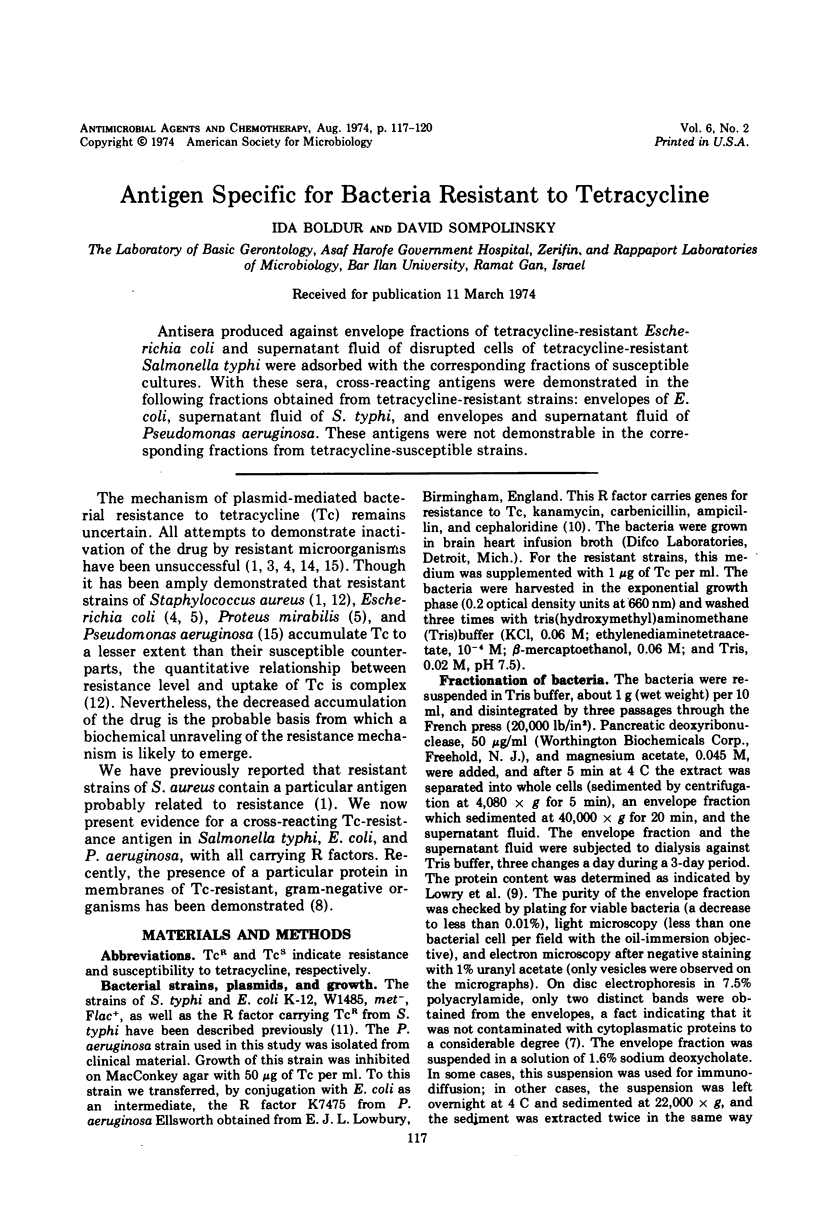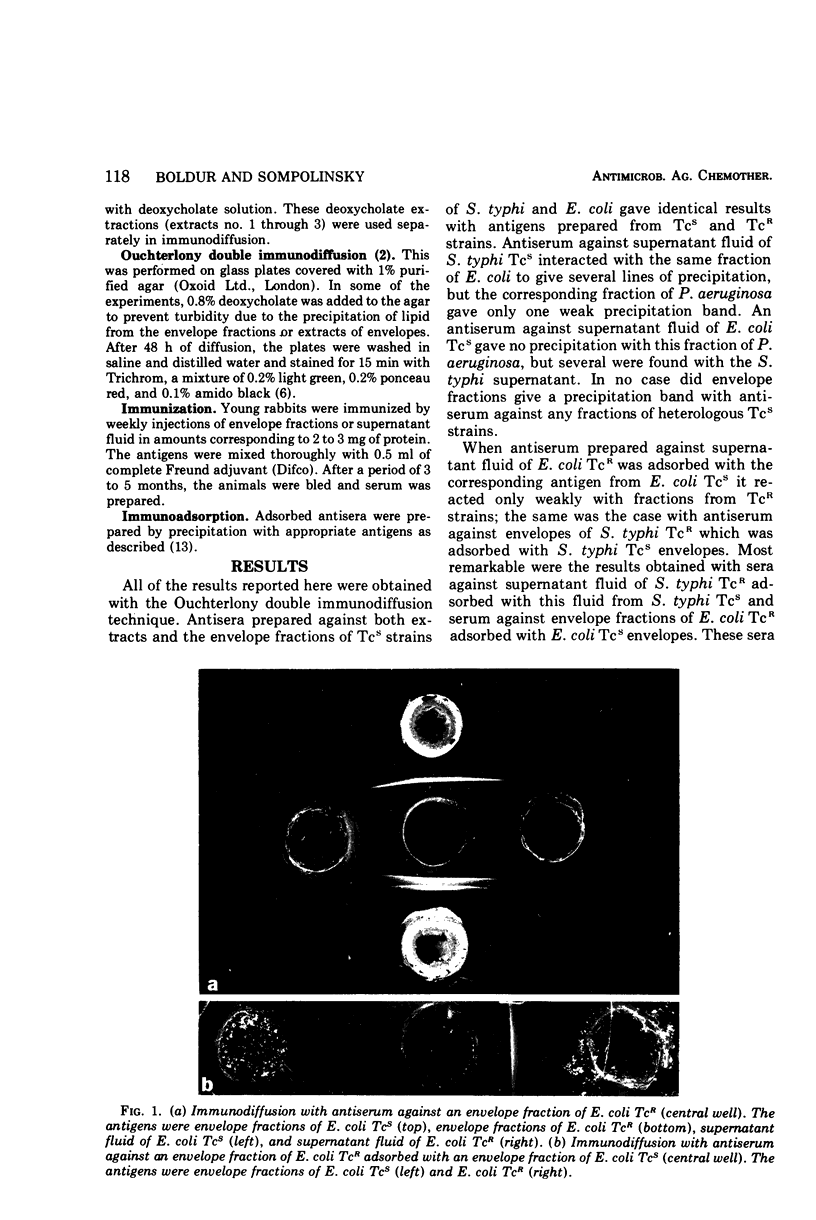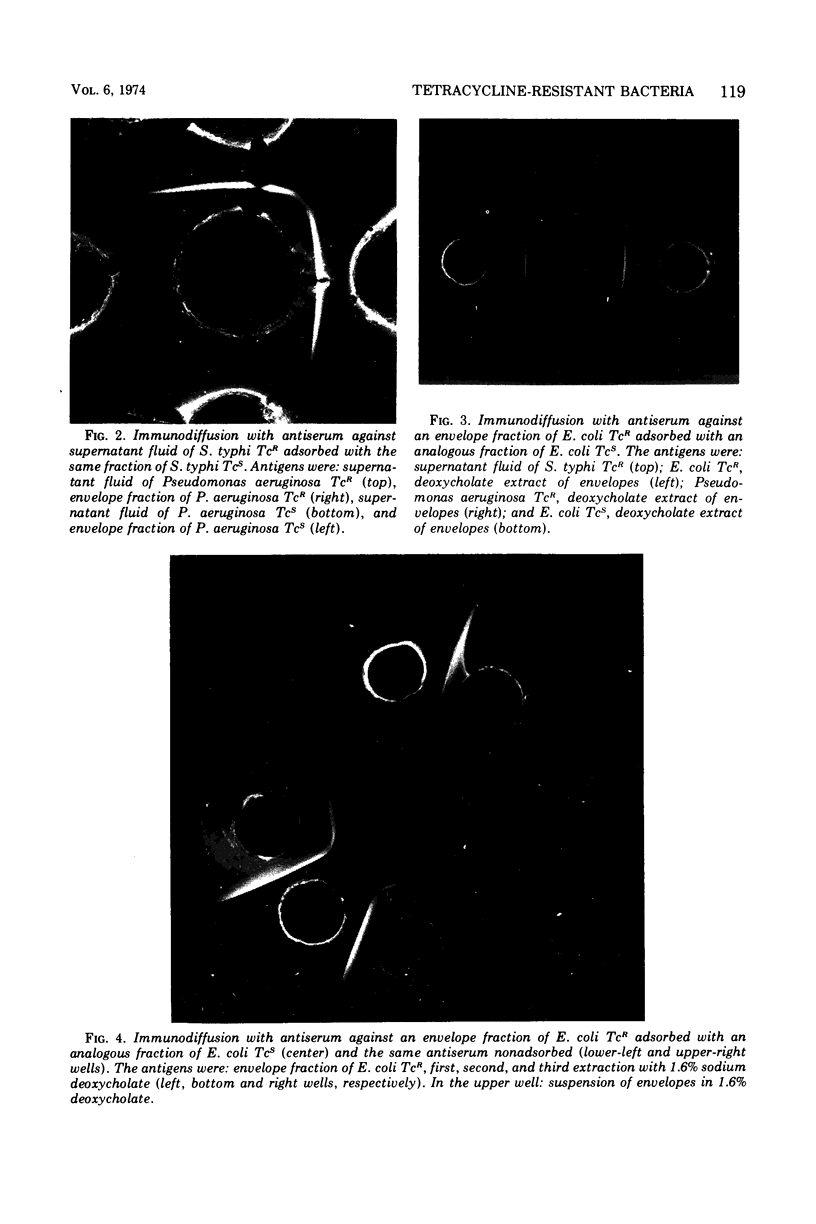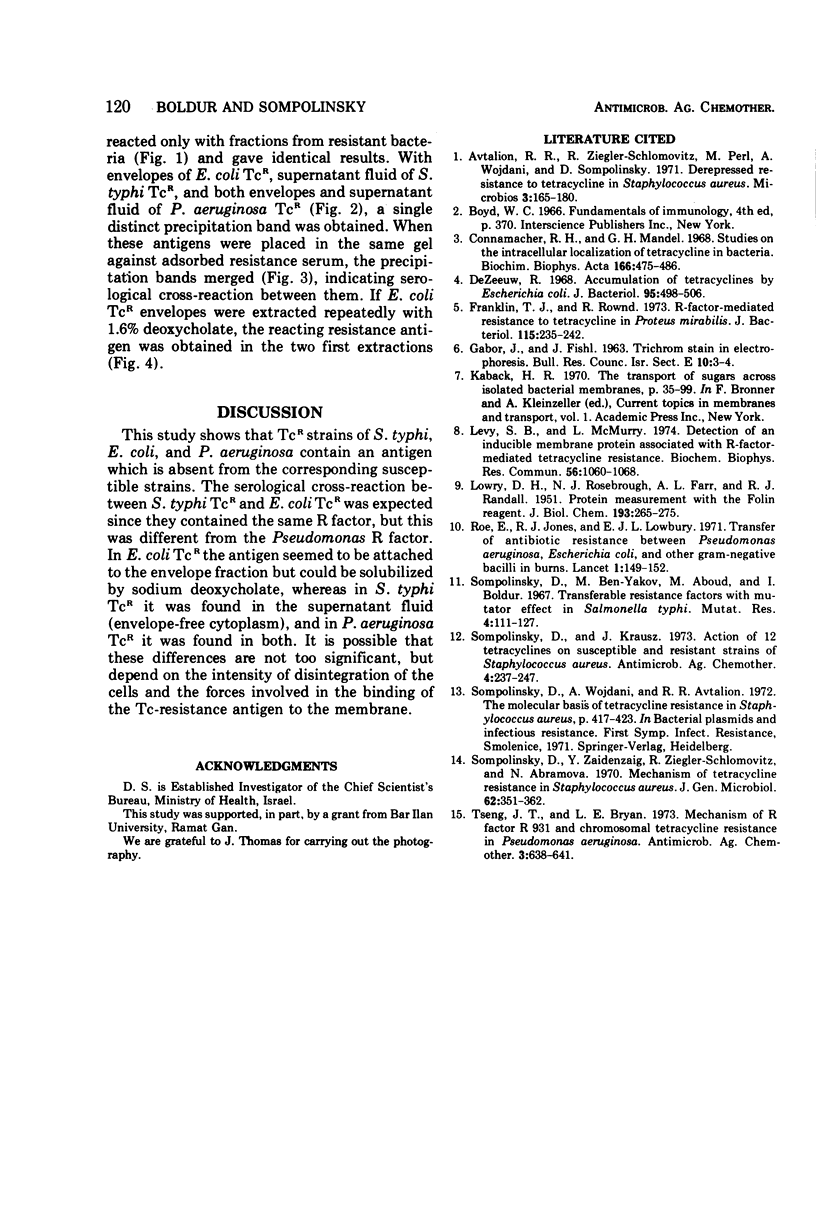Abstract
Antisera produced against envelope fractions of tetracycline-resistant Escherichia coli and supernatant fluid of disrupted cells of tetracycline-resistant Salmonella typhi were adsorbed with the corresponding fractions of susceptible cultures. With these sera, cross-reacting antigens were demonstrated in the following fractions obtained from tetracycline-resistant strains: envelopes of E. coli, supernatant fluid of S. typhi, and envelopes and supernatant fluid of Pseudomonas aeruginosa. These antigens were not demonstrable in the corresponding fractions from tetracycline-susceptible strains.
Full text
PDF



Images in this article
Selected References
These references are in PubMed. This may not be the complete list of references from this article.
- Avtalion R. R., Ziegler-Schlomowitz R., Pearl M., Wojdani A., Sompolinsky D. Depressed resistance to tetracycline in Staphylococcus aureus. Microbios. 1971 Mar;3(10):165–180. [PubMed] [Google Scholar]
- Connamacher R. H., Mandel H. G. Studies on the intracellular localization of tetracycline in bacteria. Biochim Biophys Acta. 1968 Sep 24;166(2):475–486. doi: 10.1016/0005-2787(68)90235-9. [DOI] [PubMed] [Google Scholar]
- De Zeeuw J. R. Accumulation of tetracyclines by Escherichia coli. J Bacteriol. 1968 Feb;95(2):498–506. doi: 10.1128/jb.95.2.498-506.1968. [DOI] [PMC free article] [PubMed] [Google Scholar]
- Franklin T. J., Rownd R. R-factor-mediated resistance to tetracycline in Proteus mirabilis. J Bacteriol. 1973 Jul;115(1):235–242. doi: 10.1128/jb.115.1.235-242.1973. [DOI] [PMC free article] [PubMed] [Google Scholar]
- LOWRY O. H., ROSEBROUGH N. J., FARR A. L., RANDALL R. J. Protein measurement with the Folin phenol reagent. J Biol Chem. 1951 Nov;193(1):265–275. [PubMed] [Google Scholar]
- Levy S. B., McMurry L. Detection of an inducible membrane protein associated with R-factor-mediated tetracycline resistance. Biochem Biophys Res Commun. 1974 Feb 27;56(4):1060–1068. doi: 10.1016/s0006-291x(74)80296-2. [DOI] [PubMed] [Google Scholar]
- Roe E., Jones R. J., Lowbury E. J. Transfer of anibioic resistanceetween Pseudomonas aeruginosa, Escherichia coli, and other gram-negative bacilli in rns. Lancet. 1971 Jan 23;1(7691):149–152. doi: 10.1016/s0140-6736(71)91930-1. [DOI] [PubMed] [Google Scholar]
- Sompolinski D., Ben-Yakov M., Aboud M., Boldur I. Transferable resistance factors with mutator effect in Salmonella typhi. Mutat Res. 1967 Mar-Apr;4(2):119–127. doi: 10.1016/0027-5107(67)90063-2. [DOI] [PubMed] [Google Scholar]
- Sompolinsky D., Krausz J. Action of 12 tetracyclines on susceptible and resistant strains of Staphylococcus aureus. Antimicrob Agents Chemother. 1973 Sep;4(3):237–247. doi: 10.1128/aac.4.3.237. [DOI] [PMC free article] [PubMed] [Google Scholar]
- Sompolinsky D., Zaidenzaig Y., Ziegler-Schlomowitz R., Abramova N. Mechanism of tetracycline resistance in Staphylococcus aureus. J Gen Microbiol. 1970 Aug;62(3):351–362. doi: 10.1099/00221287-62-3-351. [DOI] [PubMed] [Google Scholar]
- Tseng J. T., Bryan L. E. Mechanisms of R factor R931 and chromosomal tetracycline resistance in Pseudomonas aeruginosa. Antimicrob Agents Chemother. 1973 May;3(5):638–641. doi: 10.1128/aac.3.5.638. [DOI] [PMC free article] [PubMed] [Google Scholar]






